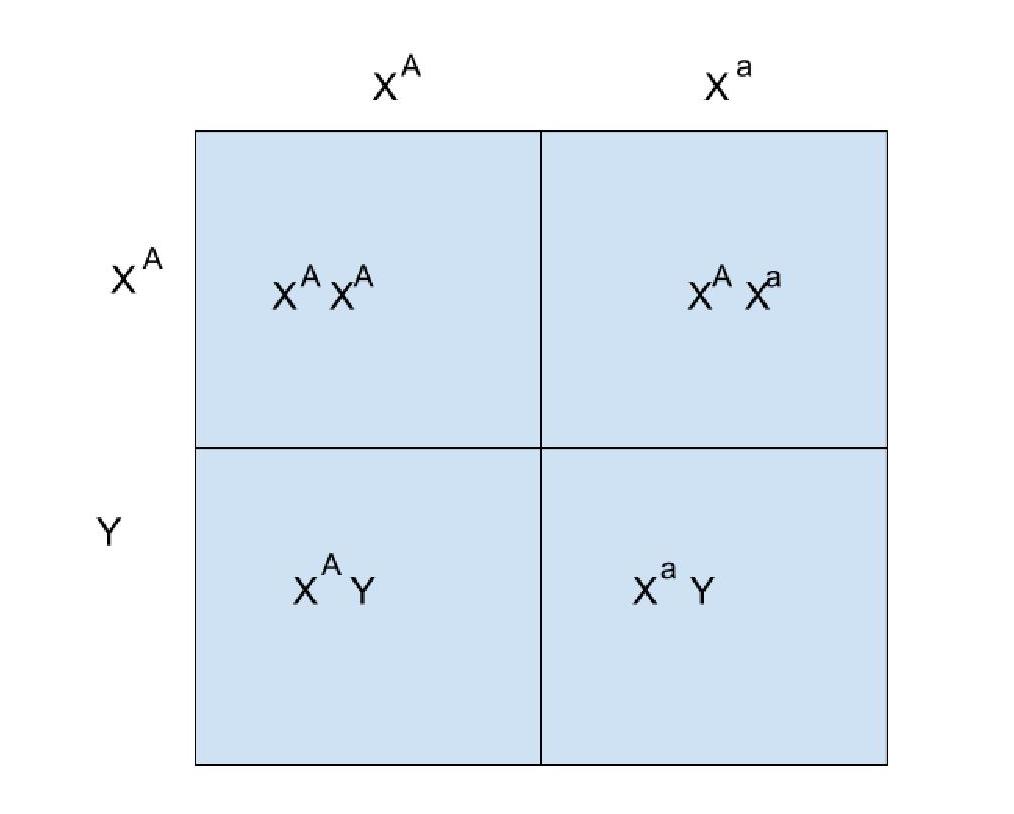Sex-Linked Traits
Introduction
As we saw previously, most pairs of homologous chromosomes are exactly alike in terms of length, shape, and the set of genes they carry. However, in humans and many other organisms, this is not true of the chromosomes that determine the sex of the organism. In humans, males possess one X chromosome and one Y chromosome, whereas females have two copies of the X chromosome.
Learning

The Y chromosome in humans is notably smaller than the X chromosome, and few of its genes have a counterpart on the X chromosome. Since human males have only one X and one Y chromosome, they therefore have only one copy (instead of the usual two) of each gene that is unique to either the X or Y chromosomes. Let’s explore how this characteristic influences the inheritance of traits located on the sex chromosomes.
Because human females have two copies of the X chromosome, all their gametes (eggs) will contain one X chromosome. In contrast, males possess one X and one Y chromosome. Therefore, on average, 50% of their gametes (sperm) will contain an X chromosome and the other 50% would contain a Y chromosome. Due to this scenario, it is the sex chromosome carried within the sperm that determines the sex of a child.
If a sperm carrying an X chromosome fertilizes an egg, the resulting child will be female; if a sperm carrying a Y chromosome fertilizes the egg, the child will be male. As you can see from the diagram below, using this determination method, 50% of the progeny will always be female (top half) while the other 50% will be male (bottom half).
Roughly 1,200 of the estimated 25,000 human genes are located on the sex chromosomes (X or Y) and these genes are “sex-linked” because their inheritance patterns are closely tied to the sex of the individual. It is important to note that since sex-linked genes are found on the X or Y chromosomes—but not both—males possess only one copy of each sex-linked gene while females receive two copies of the genes located on the X chromosome and no copies of genes on the Y chromosome.

Sex-linked genes have different patterns of inheritance than those found on other chromosomes. Consider how an X-linked recessive allele for a human genetic disorder is inherited. We can label the recessive disorder allele (a), and in the Punnett square we write this allele as Xa to emphasize the fact that it is on the X chromosome. Similarly, the dominant allele is labeled (A) and is written as XA in the Punnett square. If a carrier female (with genotype XAXa and a ‘normal’ phenotype) has children with a normal male (with genotype XAY), each of their male progeny will have a 50 percent chance of having the disorder since males only require one copy of the defective (a) allele.
In general, males are more likely than females to get recessive X-linked disorders because they have to inherit only a single copy of the disease allele, whereas females must inherit two copies to be affected.
X-linked genetic disorders in humans include hemophilia, a serious disorder in which minor cuts and bruises can cause a person to bleed to death, and Duchenne muscular dystrophy, a lethal disorder that causes the muscles to waste away, often leading to death in the early twenties. Both of these X-linked disorders are caused by recessive alleles and predominantly affect males.

Summary
In this section, we have learned:
- Humans possess 23 pairs of chromosomes; one of these pairs, the sex chromosomes (X and Y) are responsible for determining the sex of the individual.
- Females possess 2 copies of the X chromosome; males possess 1 copy of the X and 1 copy of the Y chromosome.
- Females produce gametes (eggs) that contain 1 copy of the X chromosome; Males produce gametes (sperm) that contain either an X or a Y chromosome.
- Genes located on the X chromosome are considered to be sex-linked and have different inheritance patterns depending on the sex of the offspring.
- Since males possess only 1 copy of the X chromosome, only 1 defective copy of a sex-linked gene is required to affect the individual.
- Since females possess 2 copies of the X chromosome, they would need 2 defective copies (homozygous) of a ‘recessive’ gene to affect the individual.
- In general, males are more likely than females to suffer from X-linked disorders.
- Examples of X-linked disorders include hemophilia, and Duchenne muscular dystrophy.
Sources:
“Characteristics and Traits.” By OpenStax Biology 2e. Retrieved from: https://openstax.org/books/biology-2e/pages/12-2-characteristics-and-traits/ Licensed under: CC-BY: Attribution
Mendelian Inheritance in Humans. (2021, March 6). Retrieved May 21, 2021, from https://bio.libretexts.org/@go/page/6503
Lauer, A, 2019, digital image of Punnett Square, Sex-Linked Traits, epii, accessed May 14, 2021.
